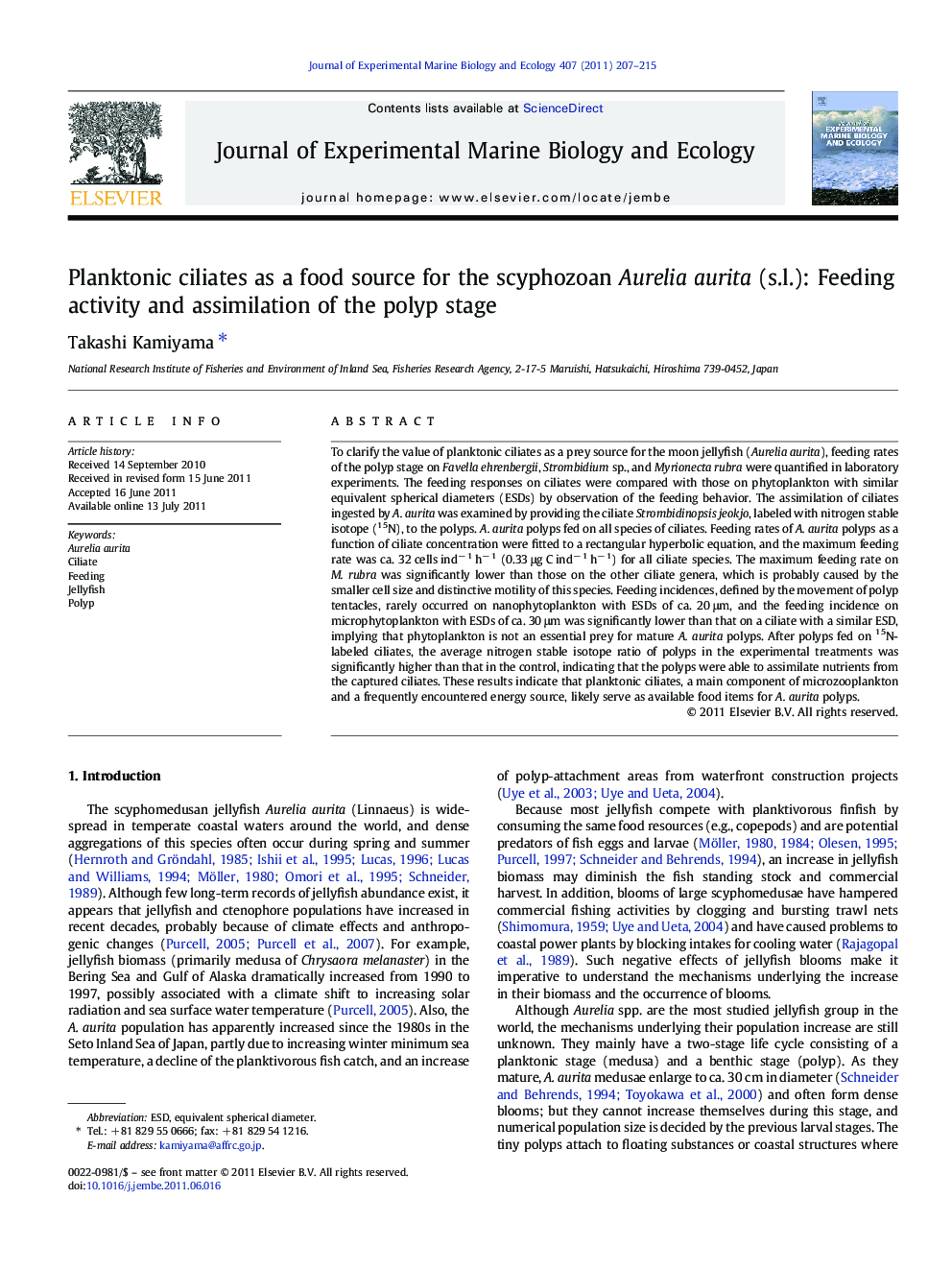| کد مقاله | کد نشریه | سال انتشار | مقاله انگلیسی | نسخه تمام متن |
|---|---|---|---|---|
| 6304471 | 1305809 | 2011 | 9 صفحه PDF | دانلود رایگان |

To clarify the value of planktonic ciliates as a prey source for the moon jellyfish (Aurelia aurita), feeding rates of the polyp stage on Favella ehrenbergii, Strombidium sp., and Myrionecta rubra were quantified in laboratory experiments. The feeding responses on ciliates were compared with those on phytoplankton with similar equivalent spherical diameters (ESDs) by observation of the feeding behavior. The assimilation of ciliates ingested by A. aurita was examined by providing the ciliate Strombidinopsis jeokjo, labeled with nitrogen stable isotope (15N), to the polyps. A. aurita polyps fed on all species of ciliates. Feeding rates of A. aurita polyps as a function of ciliate concentration were fitted to a rectangular hyperbolic equation, and the maximum feeding rate was ca. 32 cells indâ 1 hâ 1 (0.33 μg C indâ 1 hâ 1) for all ciliate species. The maximum feeding rate on M. rubra was significantly lower than those on the other ciliate genera, which is probably caused by the smaller cell size and distinctive motility of this species. Feeding incidences, defined by the movement of polyp tentacles, rarely occurred on nanophytoplankton with ESDs of ca. 20 μm, and the feeding incidence on microphytoplankton with ESDs of ca. 30 μm was significantly lower than that on a ciliate with a similar ESD, implying that phytoplankton is not an essential prey for mature A. aurita polyps. After polyps fed on 15N-labeled ciliates, the average nitrogen stable isotope ratio of polyps in the experimental treatments was significantly higher than that in the control, indicating that the polyps were able to assimilate nutrients from the captured ciliates. These results indicate that planktonic ciliates, a main component of microzooplankton and a frequently encountered energy source, likely serve as available food items for A. aurita polyps.
⺠I examined feeding responses of A. aurita polyps to ciliates and phytoplankton. ⺠The polyps actively fed on ciliates but did not respond to nanophytoplankton. ⺠I confirmed that the polyps can assimilate nutrients from the captured ciliates. ⺠Planktonic ciliates likely serve as available food items for the polyps.
Journal: Journal of Experimental Marine Biology and Ecology - Volume 407, Issue 2, 31 October 2011, Pages 207-215